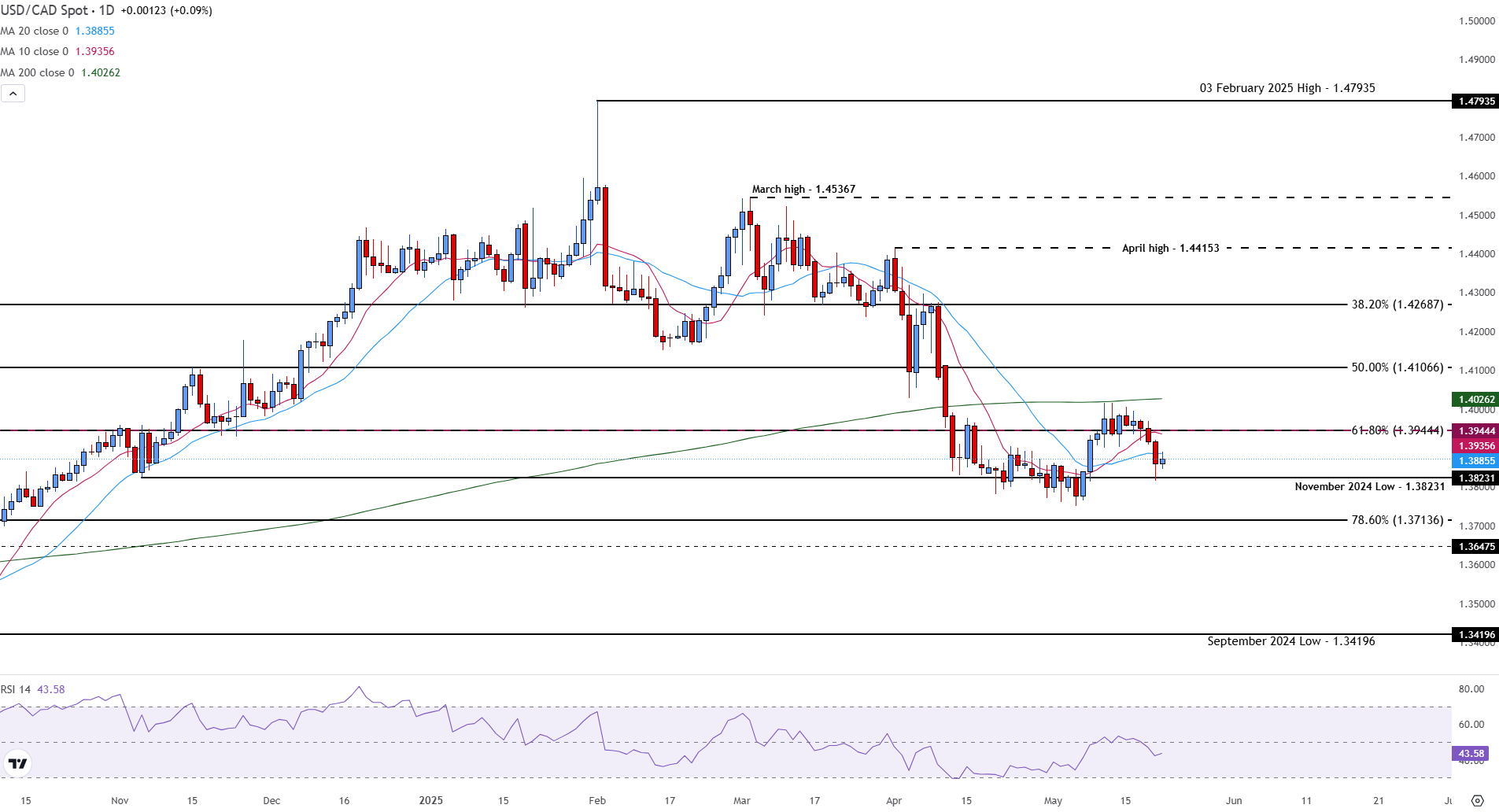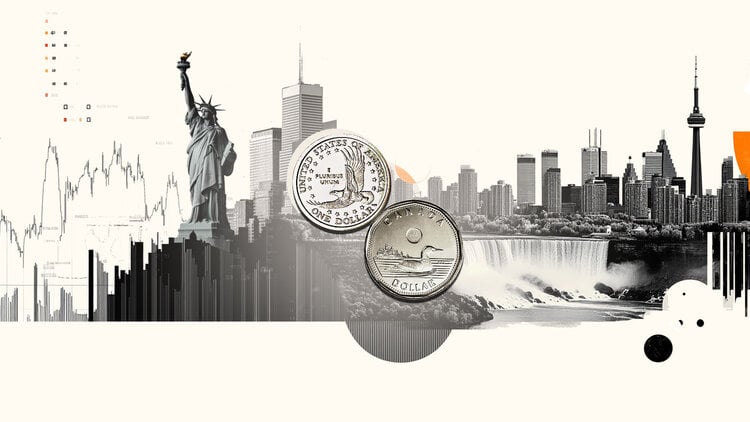- The USD/CAD faces resistance near a crucial technical level in 1,3944.
- Factory prices in Canada fell again, increasing the possibilities of a rate cut and weakening the CAD.
- The support in the minimum of November 1,3823 is maintained while the RSI shows a weak impulse but not yet overst.
The US dollar (USD) continues to face pressure due to generalized macroeconomic concerns, including high fiscal deficits, prolongly high and growing geopolitical tensions.
These structural problems have promoted a gradual change away from the dollar, with investors seeking diversification in other currencies and shelter.
Despite these winds against, intermittent support for the USD persists. The recent US economic data showed resilient figures of the PMI of services and manufacturing, indicating continuous activity in key sectors.
However, the expectations of falling in housing prices have generated concerns about the sustainability of growth in the US, especially in a traditionally critical sector for wealth and feeling of the consumer.
On the Canadian side, the economic situation has weakened, helping to limit the fall of the USD/CAD.
The most notable is that the April Industrial Product Price Index (IPP) fell an intermensual 0.8%, lowering a 0.5% increase in March, and below the expected -0.5%.
This more pronounced fall in advance highlights the softening of prices at factory door, suggesting lower inflationary pressure at the producer level.
This has led markets to value a greater probability of a rate cut by the Bank of Canada (BOC), weakening the Canadian dollar (CAD) against the US dollar, and supporting the USD/CAD near recent minimums.
The USD/CAD clings to the resistance of the mobile average in 1,3886
In the daily chart, the USD/CAD is trying the resistance in the simple mobile average (SMA) of 20 days in 1,3886. A sustained movement above this level would lead to the fibonacci setback of 61.8% from the minimum of September to the maximum of February in 1,3944, a key level that has repeatedly limited the rebounds since the beginning of May.
If the bulls manage to break above 1,3944, the following objective would be the psychological level of 1.4000, followed by the 200 -day SMA in 1,4026, which marks an important barrier for any reversal of trend.
USD/CAD DAILY GRAPH

In the lower part, the USD/CAD continues to find support in the minimum of November 2024 of 1,3823, which has remained through recent sales. A break below that level and psychological support in 1,3800 would expose the fibonacci setback of 78.6% in 1,3714, and potentially the maximum of September in 1,3648.
The Relative Force Index (RSI) is currently at 44.47, below the neutral level of 50. Although this reflects a bearish impulse, reading is not yet in overall territory, suggesting that a greater fall is possible before a technical rebound.
Canadian dollar faqs
The key factors that determine the contribution of the Canadian dollar (CAD) are the level of interest rates set by the Bank of Canada (BOC), the price of oil, the main export product of Canada, the health of its economy, inflation and commercial balance, which is the difference between the value of Canadian exports and that of its imports. Other factors are market confidence, that is, if investors bet on riskier assets (Risk-on) or seek safe assets (Risk-Off), being the positive risk-on CAD. As its largest commercial partner, the health of the US economy is also a key factor that influences the Canadian dollar.
The Canada Bank (BOC) exerts a significant influence on the Canadian dollar by setting the level of interest rates that banks can provide with each other. This influences the level of interest rates for everyone. The main objective of the BOC is to maintain inflation between 1% and 3% by adjusting interest rates to the loss. Relatively high interest rates are usually positive for CAD. The Bank of Canada can also use quantitative relaxation and hardening to influence credit conditions, being the first refusal for CAD and the second positive for CAD.
The price of oil is a key factor that influences the value of the Canadian dollar. Oil is the largest export in Canada, so the price of oil tends to have an immediate impact on the value of the CAD. Generally, if the price of oil rises, the CAD also rises, since the aggregate demand of the currency increases. The opposite occurs if the price of oil drops. The highest prices of oil also tend to give rise to a greater probability of a positive commercial balance, which also supports the CAD.
Although traditionally it has always been considered that inflation is a negative factor for a currency, since it reduces the value of money, the opposite has actually happened in modern times, with the relaxation of cross -border capital controls. Higher inflation usually leads to central banks to raise interest rates, which attracts more capital of world investors who are looking for a lucrative place to save their money. This increases the demand for the local currency, which in the case of Canada is the Canadian dollar.
The published macroeconomic data measure the health of the economy and can have an impact on the Canadian dollar. Indicators such as GDP, manufacturing and services PMIs, employment and consumer confidence surveys can influence the CAD direction. A strong economy is good for the Canadian dollar. Not only attracts more foreign investment, but it can encourage the Bank of Canada to raise interest rates, which translates into a stronger currency. However, if the economic data is weak, the CAD is likely to fall.
Source: Fx Street
I am Joshua Winder, a senior-level journalist and editor at World Stock Market. I specialize in covering news related to the stock market and economic trends. With more than 8 years of experience in this field, I have become an expert in financial reporting.







